Beauty and Cosmetics Industry Trends 2022 - 2024
A retrospective look at how the last three years shaped the new beauty industry reality, plus beauty industry trends to watch for in 2024.
In 2024, showing retail e-commerce sales reached $289.2 billion, an 8.6% increase compared to the first quarter of 2023.
In 1995, a few clicks launched the first order on Amazon, back when it was just a bookstore. Twenty-four years later, in 2019, the eCommerce industry worldwide made $3.46 trillion in sales. What’s going to happen with the eCommerce world in 2020?
A search query will probably yield results like “Buying using voice search,” “Shopping with virtual reality headsets,” and “AI-powered commerce revolutionizing shopping”. While the news may be confidently predicting these things, it’s necessary to get outside of the eCommerce media bubble and screen out likely fads to keep marketing budgets from spinning out of control.
One thing is clear: the eCommerce train is not going to slow down. Online sales reached an estimated $146.20 billion in Q2 2019 and climbed all the way to over $154.54 billion in Q3 according to recent figures from the US Department of Commerce.
Talkable did some research, and we’ve highlighted 8 eCommerce trends, which brands should focus on this year.
Consumers are fed up with Google and Facebook ads. Americans see at least 4,000 ads a day on these sorts of platforms, spiking to 10,000 a day during peak sales times. Ads find their way into users’ newsfeeds just because brands pay for them, without them necessarily being targeted and relevant. Traditional disruptive, pay-per-click/view campaigns are turning into an everyday nuisance for overwhelmed consumers. Consumers are signing up for ad blockers. Indeed, people are so fed up with angry about disruptive ads that they are ready to pay just not to see them. 47% of internet users switch on ad blockers daily.
Moreover, the evidence shows that traditional online advertising just isn’t working.
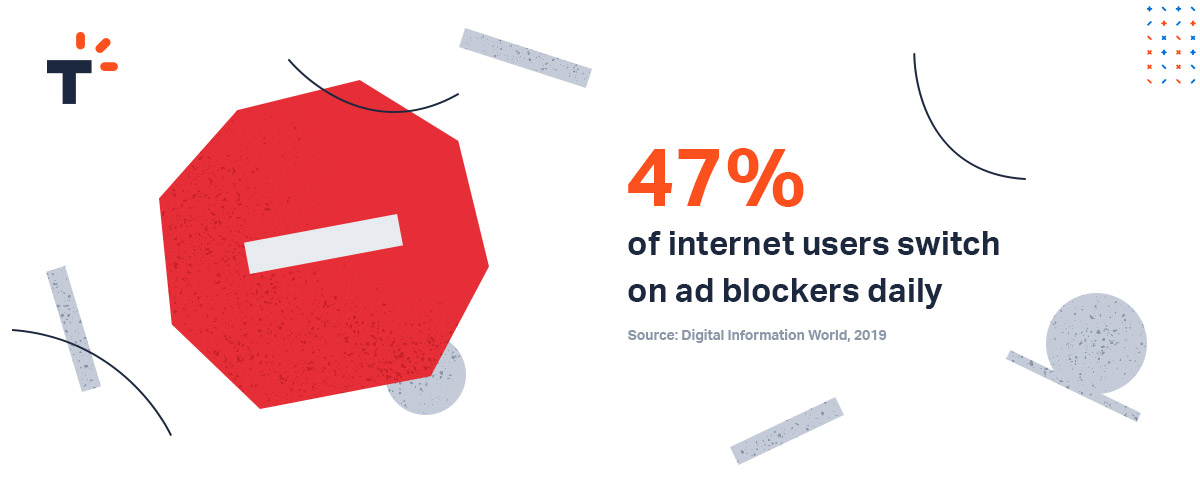
Smart brands have started directly connecting with their consumers.
Investing in influencer and referral marketing allows businesses to build long-lasting relationships with customers. Retaining existing customers is easier than attracting new ones. Moreover, since loyal users already love the brands they buy, it doesn’t take a big push to get them to spread the word among their friends with referral links. Making campaigns more personalized only helps in this process!
Furthermore, precise targeting and ad personalization help both brands and consumers to get what they’re looking for. Firstly, consumers see relevant offers that help them buy the things they want at great prices. Secondly, brands are able to spend their marketing dollars more effectively.
Stacey Ukhova, Head of Campaign Management at Talkable, says that “to build a community around a brand, companies really need to put themselves out there in front of their clientele. Customers need the opportunity to share products with their friends, family, and co-workers. Having simple social media sharing buttons alone is not enough. Since when it ends up on Facebook or Twitter, it can just show up as a generic message. These messages just get lost in a sea of similar posts or cat videos”. Stacey recommends “utilizing referrals to help solve customers’ problem of delivering your brand’s message & providing an incentive to their friends who might be interested in discovering your brand.” After all, you’re already giving out 10-15% off for new customer’s emails.
Hello, {Name}! We have a special offer for you. Only 24 hours left! You’d better hurry!
Yours truly, {Brand name}
This kind of text is usually accompanied by countdown, emojis, and overly-photoshopped images. It’s been written and rewritten so many times, and it gives marketers little hope for good conversion and click-rates. Moreover, it’s on it’s way out the door. Interactive emails are gaining new momentum.
Interactive emails have the customer act directly within the email, which itself becomes all-browsable. The goal is to make emails more functional by letting consumers do everything right from their inbox, from choosing products to buy to leaving ratings or reviews. While email marketing remains one of the main working channels for eCommerce brands, sending emails for its own sake won’t get many people to look at a store’s promotions, much less decide to buy their products. These emails have to be more deliberately crafted to be relevant, valuable, and convenient for customers.
Nike makes their emails look just like their online store display by allowing customers to see the item, its description, and its price.
EmailTees created a capsule collection of T-shirts for those who in love with email — the interactive email about T-shirts for email geeks.
Ask for feedback
Customers no longer need to leave their inbox. With Accelerated Mobile Pages (AMPs), survey questions and feedback forms are added directly to the letter.
Sales order
Merchants are now able to put all of the attractive aesthetic features and convenience of their website and put them right into emails. When customers get these emails, they can choose the size, color, quantity, and other parameters, then put their selection in their cart without leaving their inbox. Viola!
More images
AMPs let brands add several images instead of one banner or picture, as well as arrange them into a carousel or gallery. Shifts between pictures can be done either automatically or by clicking on arrows, just like on the site. This can show the customer several promotions or special offers in the header of the email. Another option is to add several images to the product card to show off the product from different angles.
Navigation sidebar
This is useful for long emails read on multiple types of devices. The sidebar opens with a click on the button on top of the main content.
Consumers know brands are watching them. Every like, click, and Googled word gets tracked by Big Data. In 2020, “too much is never enough” won’t work. We are now in a “less is more” era when it comes to customers giving up data. The challenge for brands is to find a balance between acquiring, storing, and using data while not exposing their users to risk or harm.
More often than not, customers choose which brands can access their information. Per the Invesp’s study, 57% of online shoppers are comfortable with providing personal information to a merchant if it makes their purchase easier. That’s good news for brands! Advertisers are able to focus their offers specifically on their target customers. This way, customer data benefits the customer first and foremost by providing them with relevant and timely offers instead of spamming them with random ads.
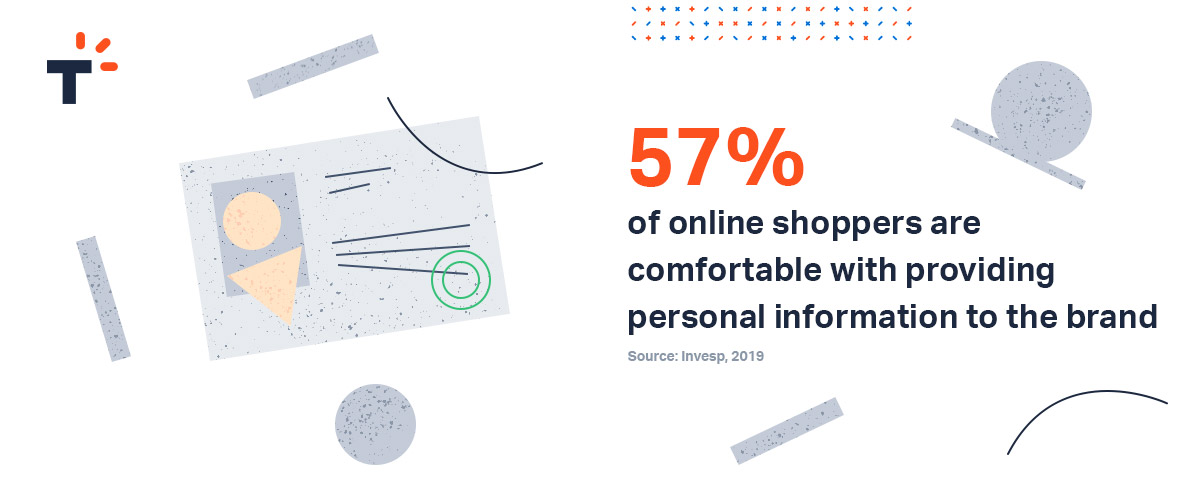
In 2020, a huge number of factors will determine what kind of advertising to show which customers, at which time, and on which platform.
Topshop serves as their customers’ personal assistant. They ask their customers about their taste, style choices, size, and budget. They then create a personal wardrobe to the customer’s preferences. The technology updates
the wardrobe with new items, just like in real life. By doing this, Topshop is able to do great business and show great dedication to their customers.
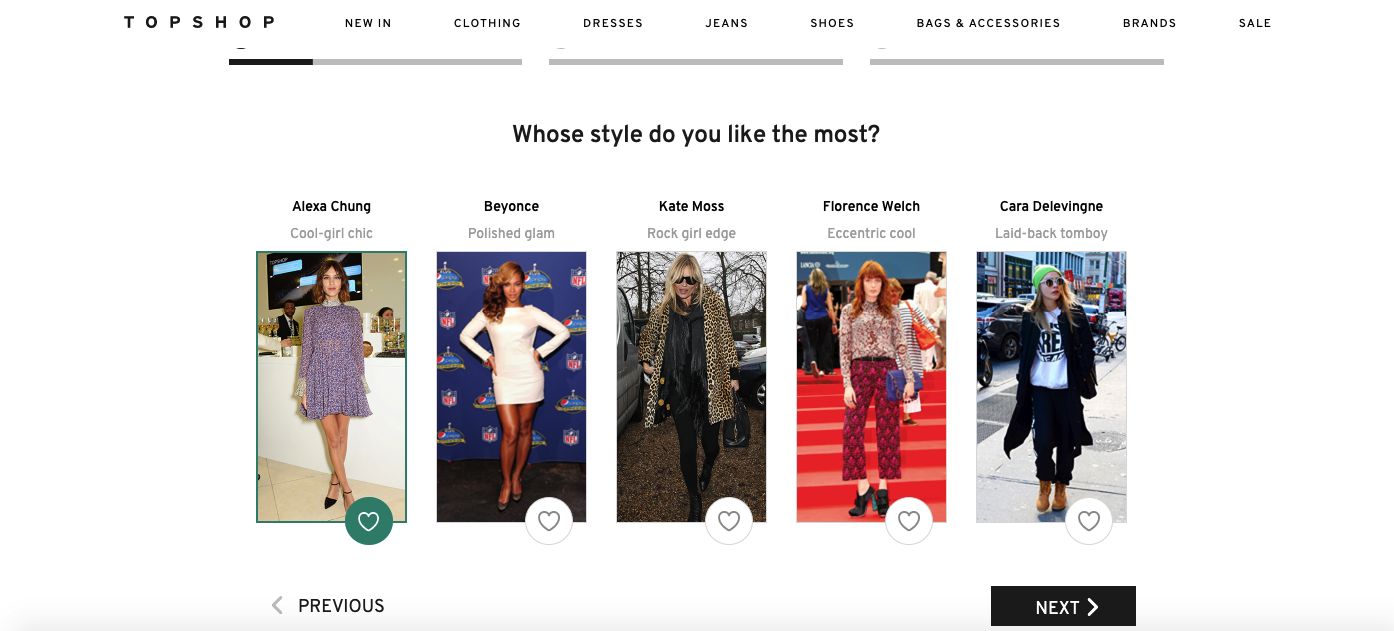
The simplest step is to customize product pages. When merchants automatically set currency and size system settings based on customers’ locations, they are saying, “We love you. We don’t want you to waste time on currency conversion, so we’ll do it for you”.
According to Sale Cycle, only 48% of abandoned cart emails get opened. Since shoppers are able to read most information from their emails just from the previews in their email apps, they usually do not even open emails. Therefore, for there to be a good chance that an abandoned cart email gets opened and thus results in a purchase, merchants need to make sure their reminders are personalized.
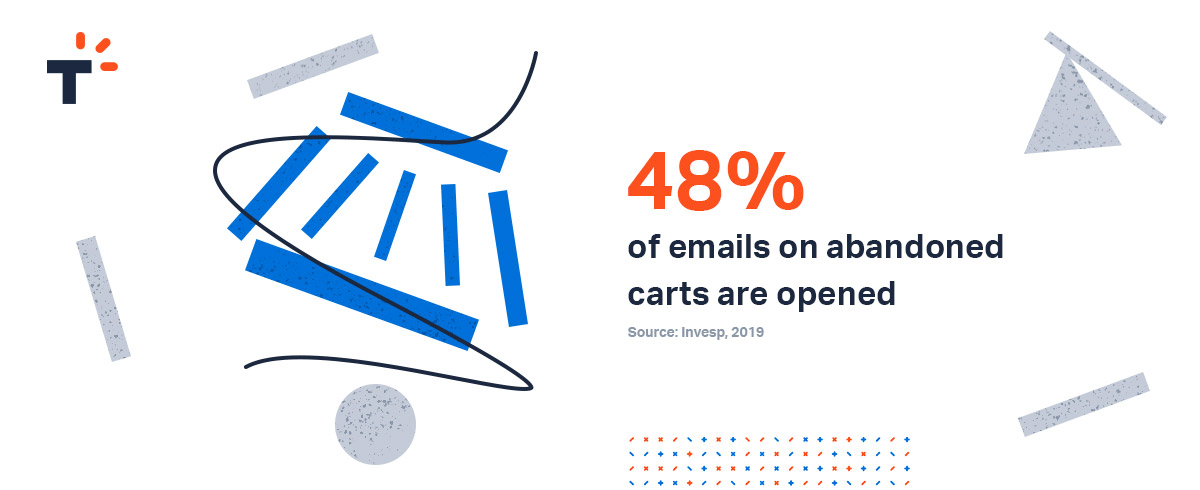
Another way to remind customers about items they’ll love is to show retargeted ads. According to Digital Information World, 26% of people are more likely to return from their Facebook pages to the store and complete the checkout process.
Customers have become quite demanding when it comes to delivery. Seventy-five percent say they expect free shipping on their orders, even if they total less than $50. Shoppers would rather pick up their orders same day at a convenient location than wait days for home delivery.
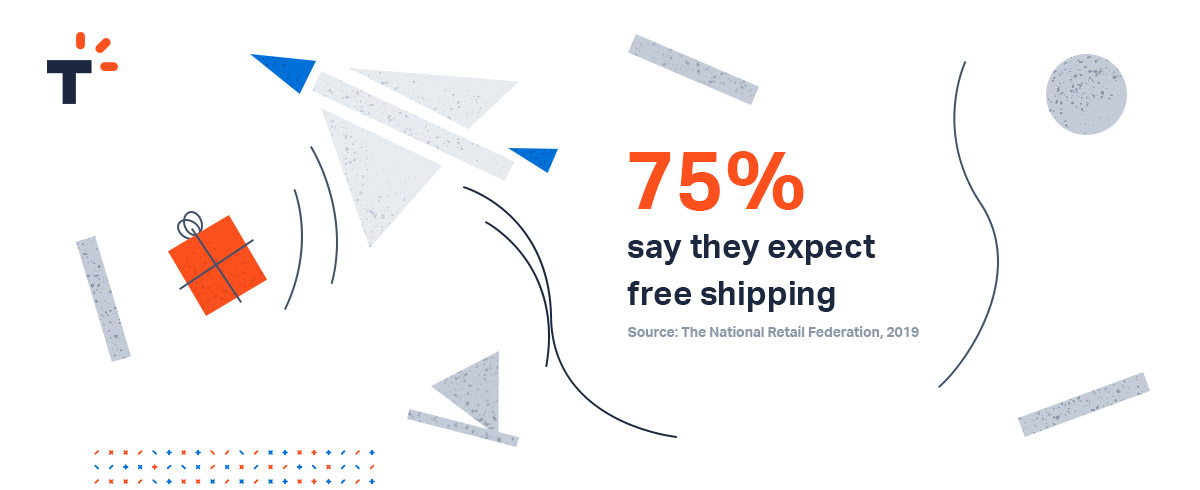
It’s not for nothing that Uber uses drones to deliver goods from the store to the customers’ doorstep. More precisely, drones deliver the goods to a courier at a distribution point, who then promptly completes the delivery to the customer’s address. Uber estimates that this technology reduces delivery times threefold.
Shopify is planning to invest $1B to improve their logistics by building the Shopify Fulfillment Network. If the result meets expectations, merchants will be able to fill and deliver orders faster and cheaper than ever before.
An hour before delivery by courier, it’s great to send a message with courier contacts to the customer. If clear delivery time is reported in the user’s account, it’s necessary to add the “Postpone delivery” or “Call the courier” button so that the customer can easily and quickly adjust the delivery time if necessary.
When Nike stopped selling on Amazon, Jefferies Financial Group analyst Randy Konik predicted that “many strong apparel (and even non-apparel) brands will continue to avoid or curb their relationships with Amazon in the future.”

Brands are now working to build a direct-to-consumer sales and delivery model. Selling directly from one’s own website can be more profitable than paying Amazon to be a middleman.
Attitudes about Amazon are changing fast. Anti-Amazon sentiment is growing, both because of the difficulties of navigating the site and because Amazon doesn’t really allow third-party merchants that sell through Amazon to adequately develop and showcase their own, independent brand identities, which can drive traffic and boost sales.
As Konik adds, “Amazon is just a traffic aggregator that reduces friction in consumption. It doesn’t build communities.”
Lee Peterson, Executive VP of Brand Strategy and Design at WD Partners, describes Amazon as a so-called “Anything Engine.” As he explains, Amazon is a platform where “[y]ou can simply do anything, get anything, [and] be anything with it,” which makes it very difficult for the competition to stay in business. Peterson shared his ideas about surviving in the Amazon era at the NRF 2024 Conference in New York. Perhaps his most important point was that having brick-and-mortar stores is no longer simply a means of distributing goods but about creating brand value.
Peterson recommends diversifying businesses by adding new options and services. The RH Palm Beach Restaurant in Florida, for example, lets their clients not only dine, but also buy their impressive furniture. This lets customers enjoy part of the experience of a night at the restaurant right at home. It also keeps the pleasant memories that customers and their home guests have from the restaurant constantly on their minds so that they want to come back to the restaurant to enjoy those memories again and again.
Customers love to see what their products look like in real life before they buy them. It’s a huge plus to be able, for example, to see how a pair of glasses look on one’s face or see how a new sofa would fit in a living room. Together, augmented reality and artificial intelligence technologies (AR and AI, respectively) can create a virtual space for customers to pick out exactly what they want.
Sephora cosmetics and perfume store has developed a tool for customers to put virtual makeup on their faces when choosing a shade of lipstick or eyeshadow. Shopify now provides their customers with the ability to use AR to help small businesses create 3D models of their products. Some stores like Horne and Pure Cycles have already started to use this option. The introduction of a virtual hat fitting feature has allowed Tenth Street Hats to increase conversions on the site by 33% and engagement by 74%.
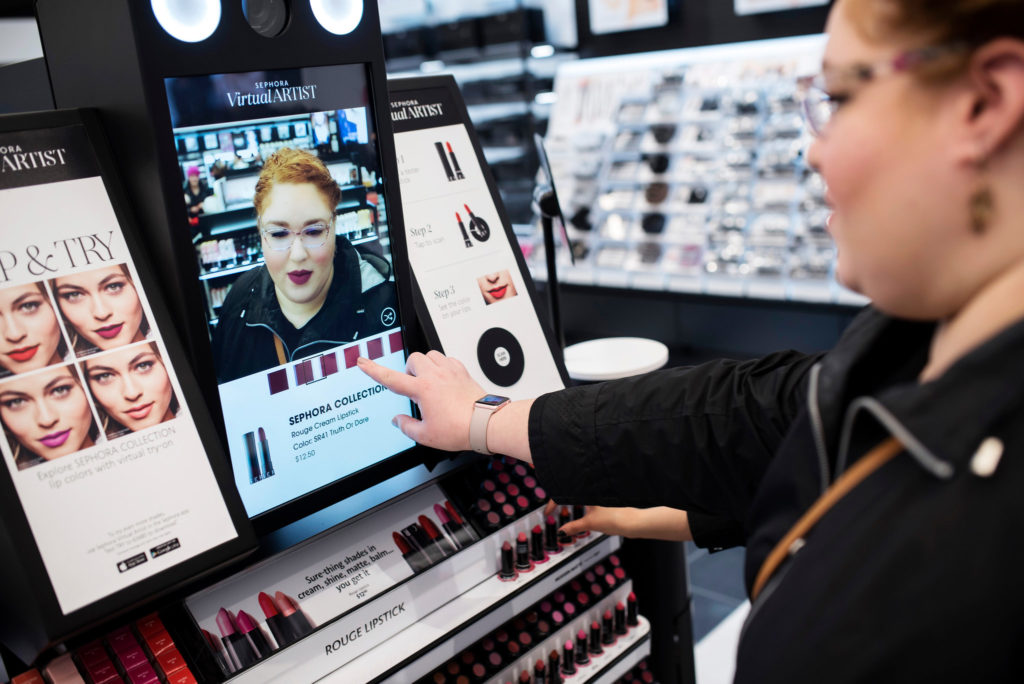
AR is often used as an entertainment tool, and it can go viral. The Snapchat gender mask, for example, attracted 2 million new users in two weeks. Moreover, the technology doesn’t require a huge investment.
Facebook, Apple and Google have released open platforms for creating AR. They have simplified the development process and opened up opportunities for food companies to create AR models on these platforms.
The Apple ArKit and Google ARCore platforms have spurred the development of WebAR, which enables the creation of augmented reality for browsers. Now no one has to develop mobile applications — AR opens directly in Safari and Google Chrome.
Social media is becoming ubiquitous in shopping, just like in real life.With a phone in their hands, it’s becoming convenient for shoppers to purchase products directly through posts or profiles. This is going hand in hand with influencer marketing. Many brands are looking to collaborate with opinion leaders, bloggers, and celebrities who recommend, tag, review, or demonstrate a product on video. This kind of marketing spurs a lot of impulse purchases.
Last year, Instagram launched its Checkout shopping feature, which allows brands to highlight products with a price tag and convert customers right from their social media browsing session. Adidas was one of the first brands to test the feature, and in the first three months, the sportswear brand has seen a 40% jump in online sales, Digiday reports.
In October 2019, they started testing AR marketing with selected brands like Ray-Ban and Warby Parker to fire up users and facilitate shopping without even leaving Instagram.
Since shopping is a part of Instagram’s culture, the company is forming direct but non-intrusive connections with their customers. They are constantly enhancing the shopping experience, for example by adding a reminder sticker for product debuts on Instagram Stories and buying from influencers.

Ray-Ban added price tags to their photos to make their customers’ buying decisions even easier. Once the customer sees the spiffy shades they like on Ray-Ban’s social media page, they don’t have to do any sleuthing — or even bother with the image description! — to figure out the price. Instead, the price tag links right to the page where the customer can find any other information they need and make the purchase. In a few quick clicks, the purchase is completed — the customer is happy, while the brand got great feedback, positive user engagement, more followers, and most of all boosted sales.
A product without a price tag is not very useful on a brand’s profile. Since the feature is available, it would be a waste not to use it.
The growth of mobile eCommerce is eye-popping. Since 2016, sales through mobile devices have jumped by 15%. By the end of 2021, 73% of eCommerce transactions will happen on a mobile device (Statista, 2019).
Mobile shopping will continue to get more popular. It’s no wonder why brands put lots of focus on webpage optimization and fast-loading pages. If the page doesn’t load quickly or is hard to navigate, the merchant can lose a customer in an instant!
At the same time, there is a gap between cross-device purchase completion. 85% of purchases are started on one device and finished on another. That means brands will have to become savvier in dealing with this.
To take advantage of growing mobile commerce, there is a need to make sure that website has a mobile-optimized version and can be loaded quickly. Page loading speeds should be even higher than on a PC. Increasing download speed is a matter of quality development and technology selection. Software technologies are gaining relevance, in which minimization of speed was originally incorporated (PHP version 7.x., HTTP / 3, Lazy load, WebP).
The eCommerce world is a competitive battlefield, and businesses of all sizes fight for customers, traffic, and sales. These are all that people in the eCommerce business hope for. Tracking industry trends is necessary to get the best results, and we think these eight are worth watching.
Would you like to know what the referral marketing program is made of? This guide will answer all your questions: Complete Guide on Referral Programs by Talkable.
A retrospective look at how the last three years shaped the new beauty industry reality, plus beauty industry trends to watch for in 2024.
Talkable made its inaugural appearance at INBOUND 2024 in Boston. The main insights were around the ways to make consumers feel heard and connected.
Standout referral campaigns from Australia's leading brands. Brands like Surf Stitch, Henson Shaving, Cash Rewards, and Temple & Webster aren't just...
Be the first to know about new Referral Marketing insights from eCommerce industry leaders to build or refine your growth strategy.